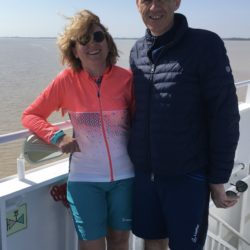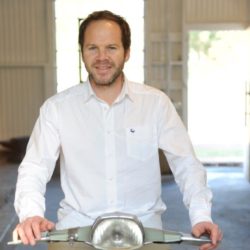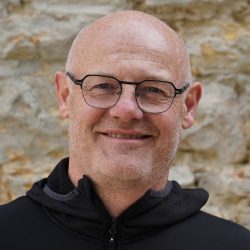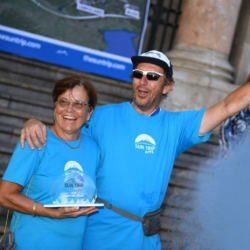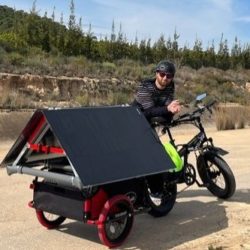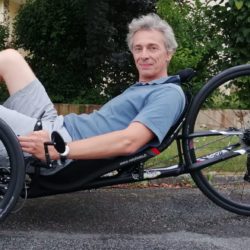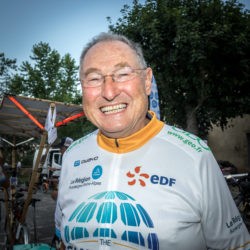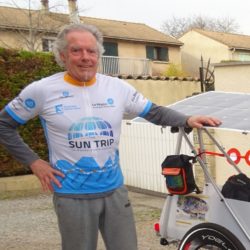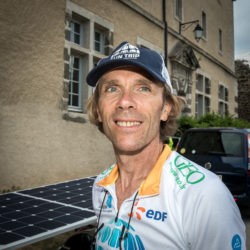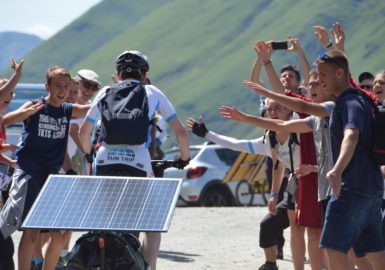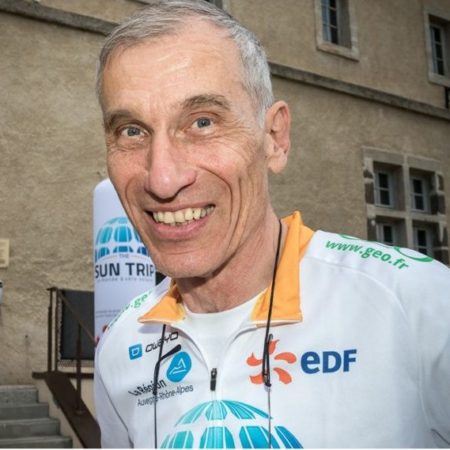
Jean-Claude Keller
- Accueil
- The Suntrippers
- Jean-Clauder Keller
Continuation of the contributions proposed by the members of the Sun Trip family, with this text from the Swiss Jean-Claude Keller, long time fan, participant of the Sun Trip Tour 2019 prologue 2020, 2021, and end of the tour 2022, physicist and lecturer accustomed to climate issues.
There is a “climate emergency” and the first symptoms of future climate disruption are beginning to be visible. Their list is long: warming, melting ice, rising waters, heat waves, droughts, forest fires, cyclones, acidification of waters, etc … Scientists have established that human activities are the main cause, especially with the release into the atmosphere of CO2, a greenhouse gas. As an example, today for all our needs, we consume more than 95 million barrels of oil per day, which represents more than 170’000 liters per second, a large part of which is used for mobility and transportation. This oil consumption corresponds to the release of more than 500 tons of CO2 per second into the atmosphere.
Currently, on a global scale, the mobility of people and the transport of goods are essentially based on the consumption of petroleum products (gasoline, diesel, heavy fuel oil and kerosene). There are two main reasons for this “success”. Firstly, these products are liquid at room temperature, so there are no storage and decanting problems, as tanks and vats are sufficient, and they can be filled extremely quickly! Secondly, these products have a high energy density, about 10 kWh of energy per liter for a price of less than 2 euros! For example, in our latitudes, to produce 10 kWh with 1 m2 of photovoltaic panels normally placed on a roof, it takes about 50 hours of good sunshine. It is therefore easy to understand why these liquid petroleum products have become popular in the mobility and transport sectors, where the aim is to carry the maximum amount of energy in the smallest possible volume!
In view of future climate change, we need to move away from fossil fuels as soon as possible in all our sectors of activity. In the field of mobility, the alternatives are electricity, hydrogen, compressed air and muscle power. It should be remembered that natural gas is not an alternative because its consumption emits CO2, and that the biogas and biofuel markets are not large enough to play an important role. Compressed air is also not a feasible solution on a large scale, its use is limited by the small amount of energy contained in a tank, 200 liters of compressed air at 300 bars corresponds to about 1 liter of oil, or 0.05 kWh per liter. In addition, the efficiency of the compressed air motor is much lower than that of an electric motor.
If we want to do without oil for mobility and transport, there is still the electricity system with a battery that powers an electric motor and hydrogen with a fuel cell that also powers an electric motor. To store electricity on board the vehicle, lithium-ion batteries with a capacity of about 0.25 kWh per liter are used. To store hydrogen, it is compressed to 700 bars, then injected into an ad hoc tank, and under these conditions, about 1.4 kWh per liter can be stored. But hydrogen and electricity are not available on earth like oil, they have to be produced with another form of energy, if possible renewable: hydraulic, solar photovoltaic or thermal, wind, tidal or wave power. From a technological point of view, all this is feasible, it is only a question of economics on the one hand and of the distribution network on the other, the hydrogen solution with fuel cell being for the moment more expensive than the electricity solution with battery.
In the individual mobility sector, the bicycle with electric pedal assistance is one of the most energy-efficient solutions for transporting one or two people. These are light and hybrid vehicles since the muscular energy of pedaling is assisted by an electric motor. For several years, these bicycles have been a resounding success in most developed countries. To increase the autonomy of these machines, it is possible to add photovoltaic panels that provide electricity in good weather, the bike becomes electro-solar! With sunny days, it becomes possible for people of all physical conditions and all ages to have an autonomy between 100 and 150 km per day. Florian Bailly has set up the Sun Trip adventure on this principle, with the idea of promoting a new type of itinerancy, that of electro-solar bikes! This adventure is in line with the great adventures of the 21st century, those that show the way out of fossil fuels! Long live the Sun Trip!
Jean-Claude Keller – Physicist and multiple participant of the Sun Trip

